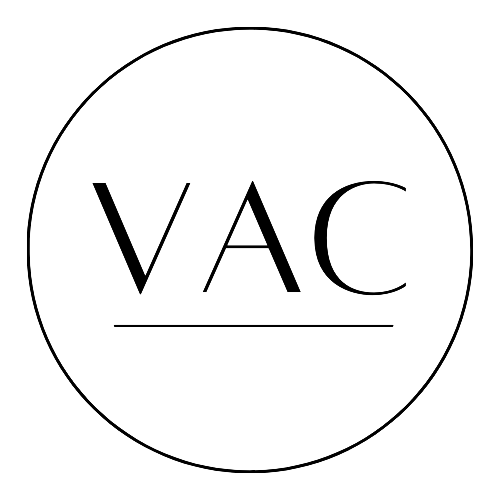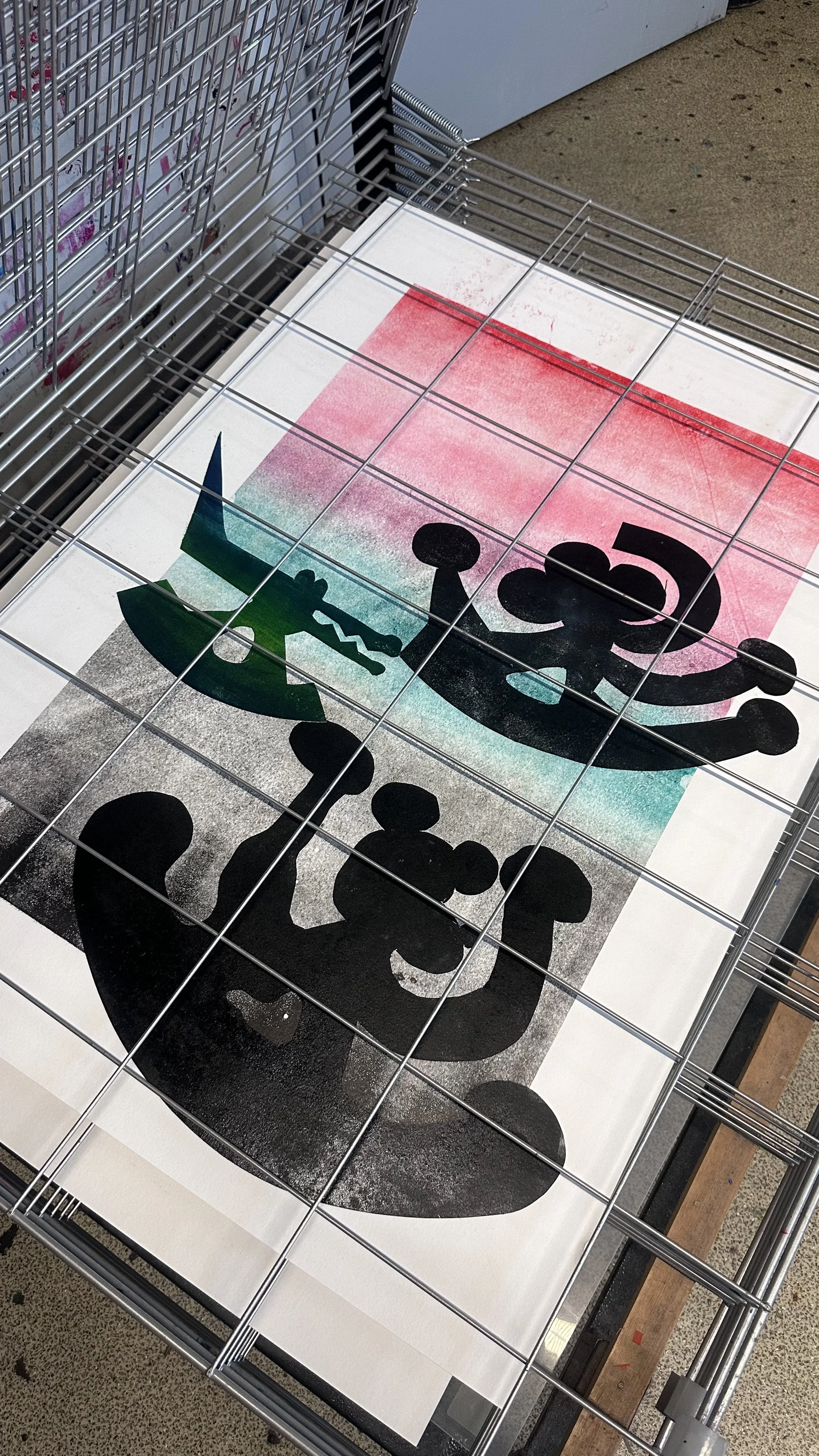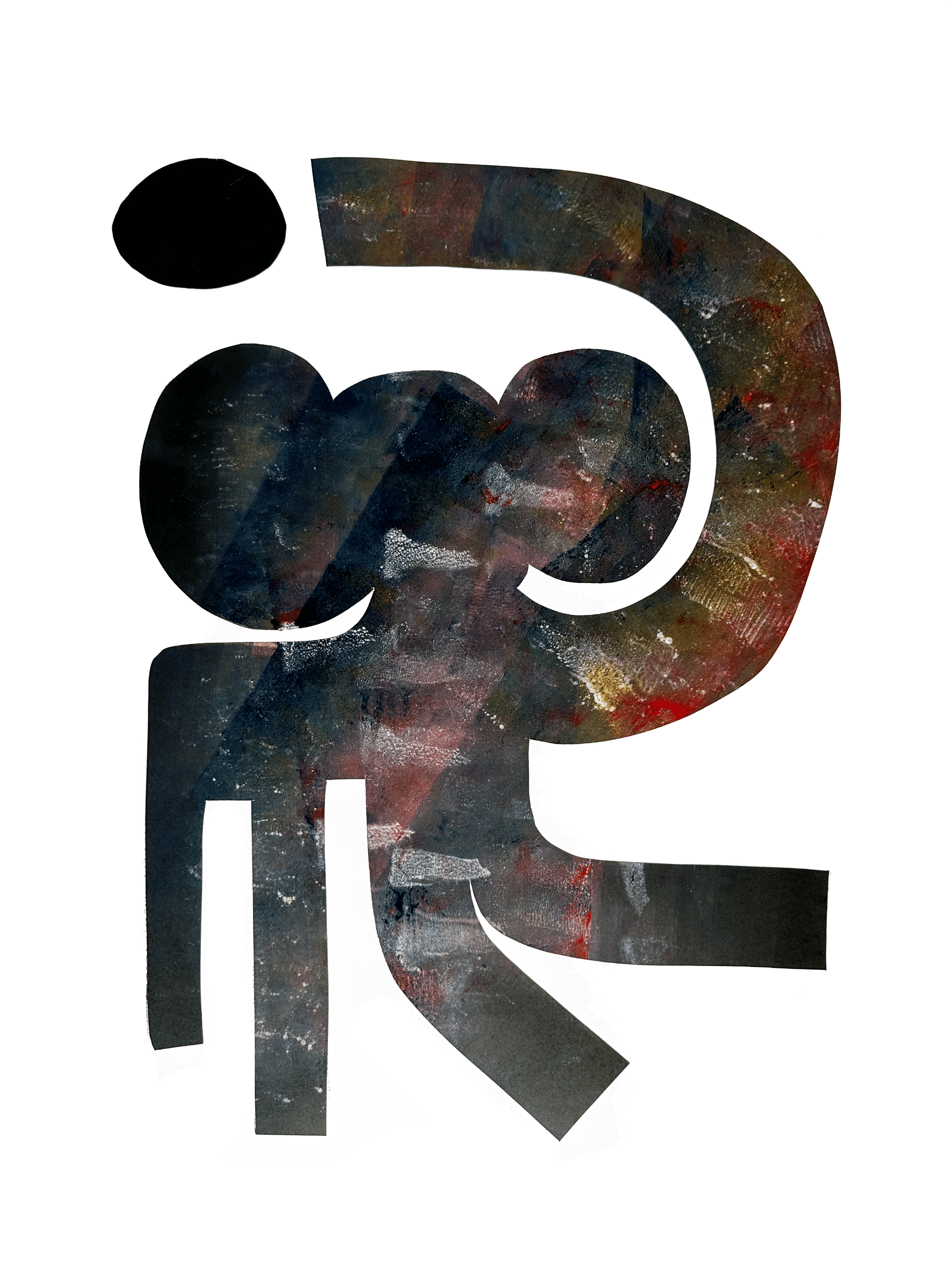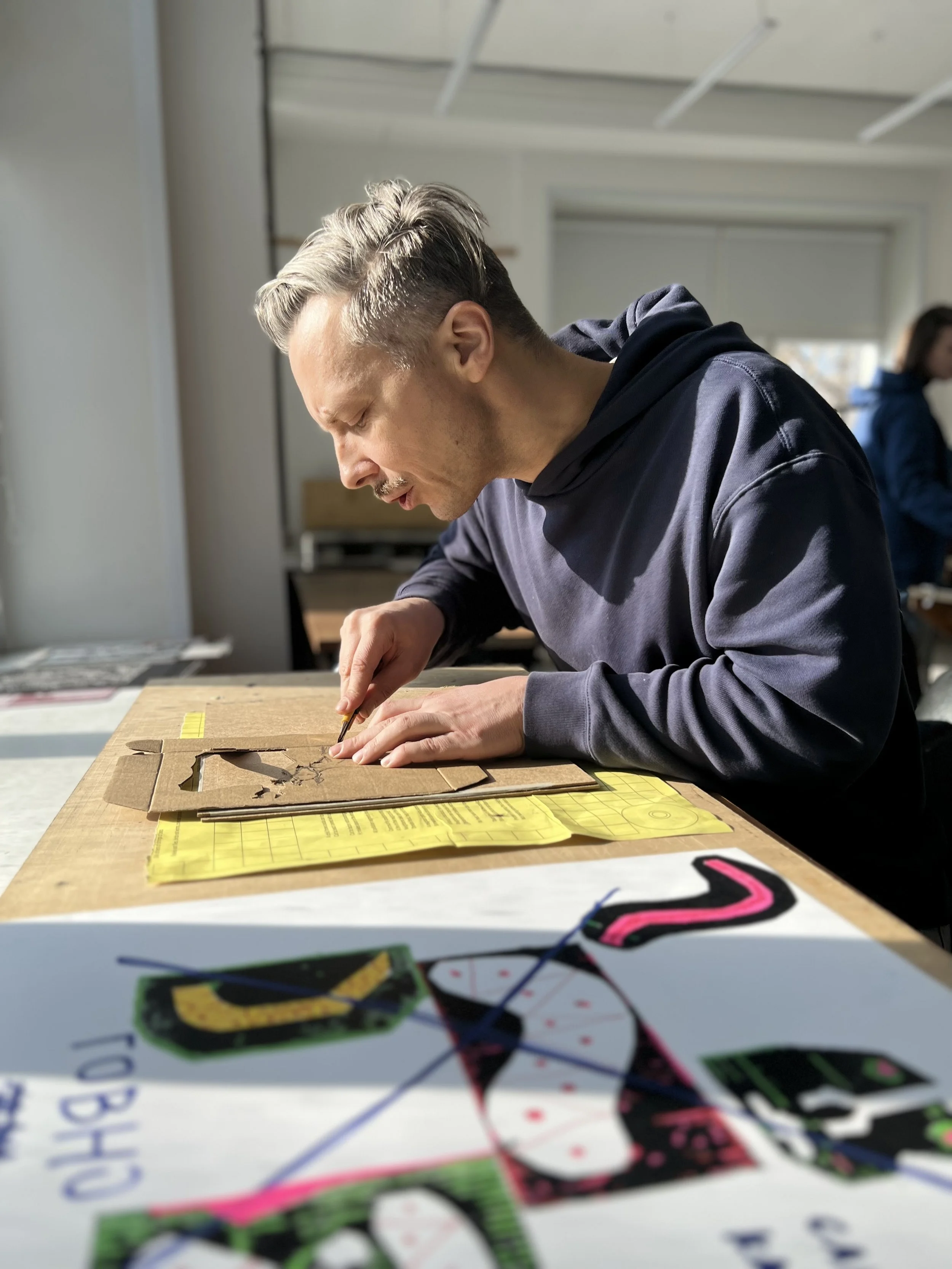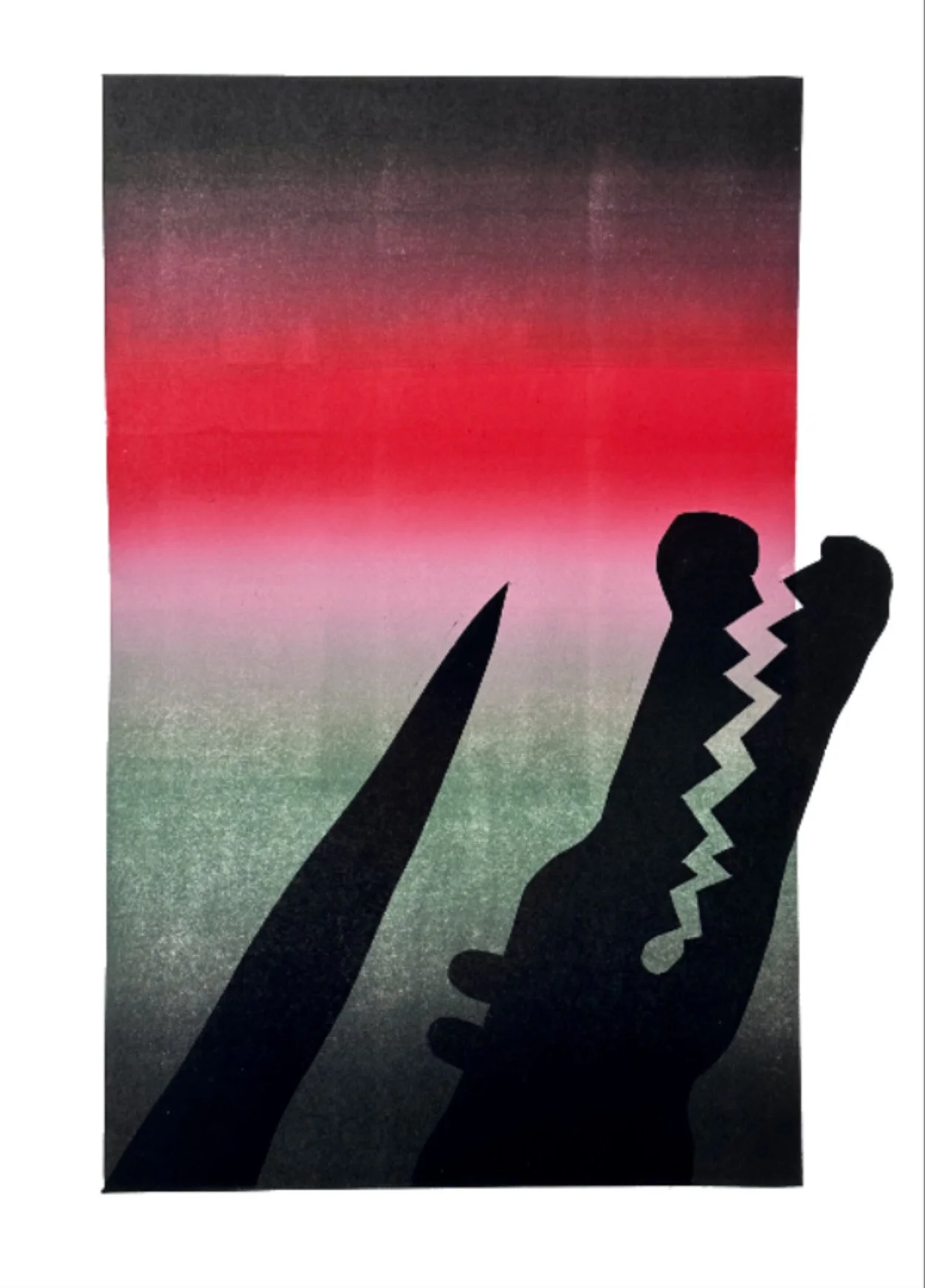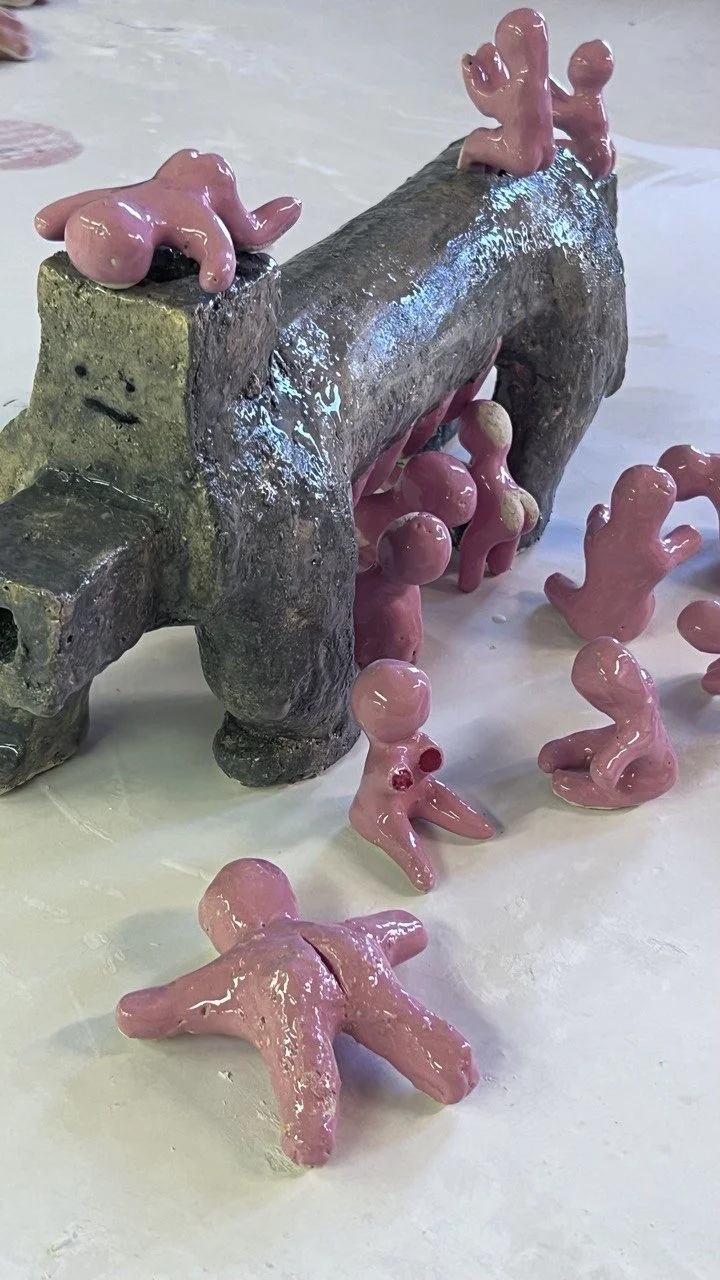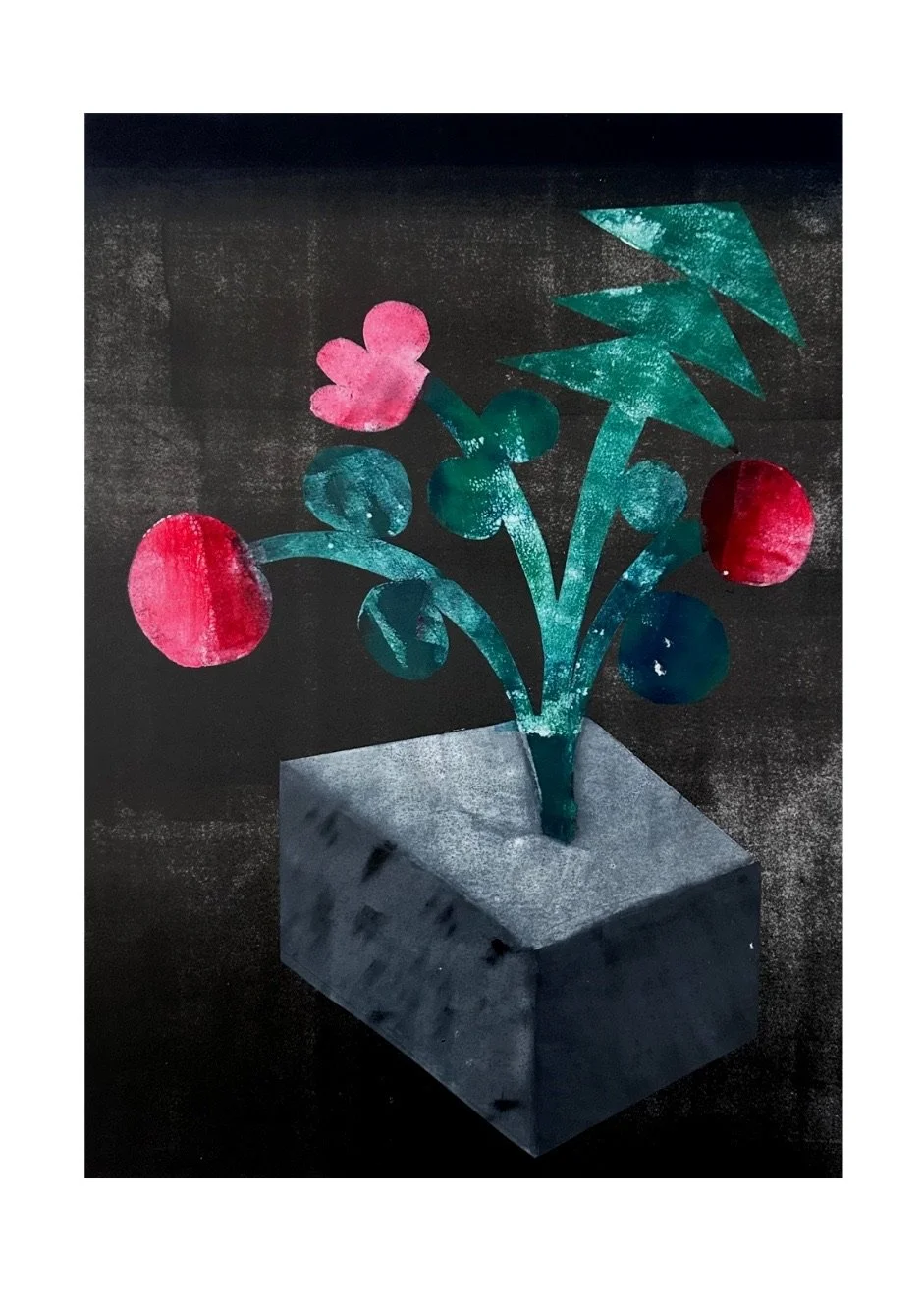Bogdan Kanuka: Unexpected Solutions
Bogdan Kanuka is a multidisciplinary artist based in New York City, working primarily in linocut and ceramics. With a background in multimedia design, fashion, theater, and illustration, his practice embraces minimalism, experimentation, and symbolic clarity. Drawing on traditional techniques like icon painting and engraving, Kanuka reimagines familiar forms through abstraction and playful trial and error. Animal imagery often appears in his work—not as literal subjects, but as signs and metaphors that distill complex ideas into bold, elemental shapes.
How did your creative journey begin?
I spent a long time searching: I started with photography, then worked in graphic design, tried myself in fashion and theatrical design.
At some point, I decided to go deeper and enrolled in an illustration program. That course turned out to be so intense and diverse that each assignment felt like an entirely new world: portrait, poster, ceramics, bookmaking, painting, animation, 3D, comics, printmaking. Each time there was a new idea, new images, new characters. We were given wild tasks that pushed us beyond the familiar and encouraged unexpected solutions. The program seemed to encompass almost every applied art form.
Later I completed a course at MMOMA in Moscow, where I immersed myself in texts and concepts for the first time. That gave my work a new layer of depth.
Now I’m completely absorbed in drawing, printmaking, and painting — but I can’t let go of ceramics. These two mediums inspire me and spark a true sense of passion.
You describe your visual language as minimalist, where symbols and signs carry the idea. What draws you to this distilled way of communicating?
Honestly, I’ve never been interested in complex or overly realistic images. They feel suffocating to me, as if they lack air. But an extremely simple form, with just a minimal hint of an object, can suddenly become incredibly expressive. Such forms can be bold, funny, touching, even endearing. That excites me. They immediately spark emotion, a sense of delight.
I’d say that without this minimalism, I probably wouldn’t even feel the urge to draw. And from these forms, I begin moving toward meaning. Often it surfaces from the subconscious — as if the image itself leads me to the story or emotion I want to express.
What does a typical day in the studio look like for you, and how has your art practice grown or changed?
When I begin a new series, I start by dreaming about it — coming up with a theme, envisioning how it might look. For example, in my recent ceramics series “Toys,” I wanted to make horses. But in clay they turned out so boring that I began deforming them — shifting from one figure to another. In the end, the whole series had no horses at all.
Coming back to the question: my day in the studio is never predictable. I can start with one idea, but everything changes in the process. I constantly ask myself, “What if I try this? What if I do the opposite?” I start improvising on the fly, diving into experiments. That always gives me a variety of options, and I choose whatever feels most alive and authentic.
How do you approach experimentation in your studio practice? Do you set rules or embrace the unexpected fully?
Experimentation for me is playfulness, mischief, and passion. It’s the main character in my creative process. Experimentation brings solutions I could never reach by strictly following a plan.
When I begin working, I dive in with greed and curiosity — as if I’m secretly watching myself. If something interesting emerges, I might change direction, document the discovery, or photograph it as an archive for later. Sometimes I leave a sketch behind and start a new one — similar, but with space to keep moving through the process and see where it leads.
How has social media impacted your work?
On one hand, social media allows me to share my process, get feedback, and see how people respond to my work. That can be inspiring — sometimes a comment or a random message sparks a new idea. But to be honest, this has become such a normal part of life for everyone.
On the other hand, when I’m working, I forget about all of it. Of course, everything influences us in some way — but I don’t feel it directly. Some things come from the internet, others from past experiences in art, from travel, or even from cartoons I watched as a child.
It may sound funny, but sometimes I think those childhood cartoons shaped my work more than anything else. Everything else — social media included — blends into a larger layer of contemporary life. For me, it’s not a separate world, but part of the whole environment we live in.
You’ve studied photography, fashion, theater, and illustration. How have these disciplines influenced your current work in ceramics and print?
Honestly, I’m not sure. Composition, a sense of beauty — maybe they were always there, or maybe they appeared gradually without me noticing. I don’t consciously draw on past experiences, and I don’t analyze what exactly they gave me. Instead, I’m focused on how to make something more interesting, more unusual.
Right now, I feel less connected to the past and more to a state of fullness — bliss or love, it’s hard to say. Ideas and images arise on their own, and my job is simply to catch and record them. This happens when I enter the flow — a state of total immersion in the process. For me, it feels like a small miracle. I try to capture as many ideas from that state as I can.
How important is it for your final work to match your original vision—or is the process of discovery more important than precision?
Both the concept and the process are important to me. I like starting with a clear idea but leave space for the work to evolve. Experiments don’t destroy the original thought — they help it unfold.
For example, in the “Toys” series, my main concept remained intact: these were meant to be rocking toys, like old-fashioned horses. That structure stayed, but within it, the forms transformed from the initial vision into the final objects.
So I can say with confidence: both matter. And somehow, I feel I’m managing to keep that balance.
